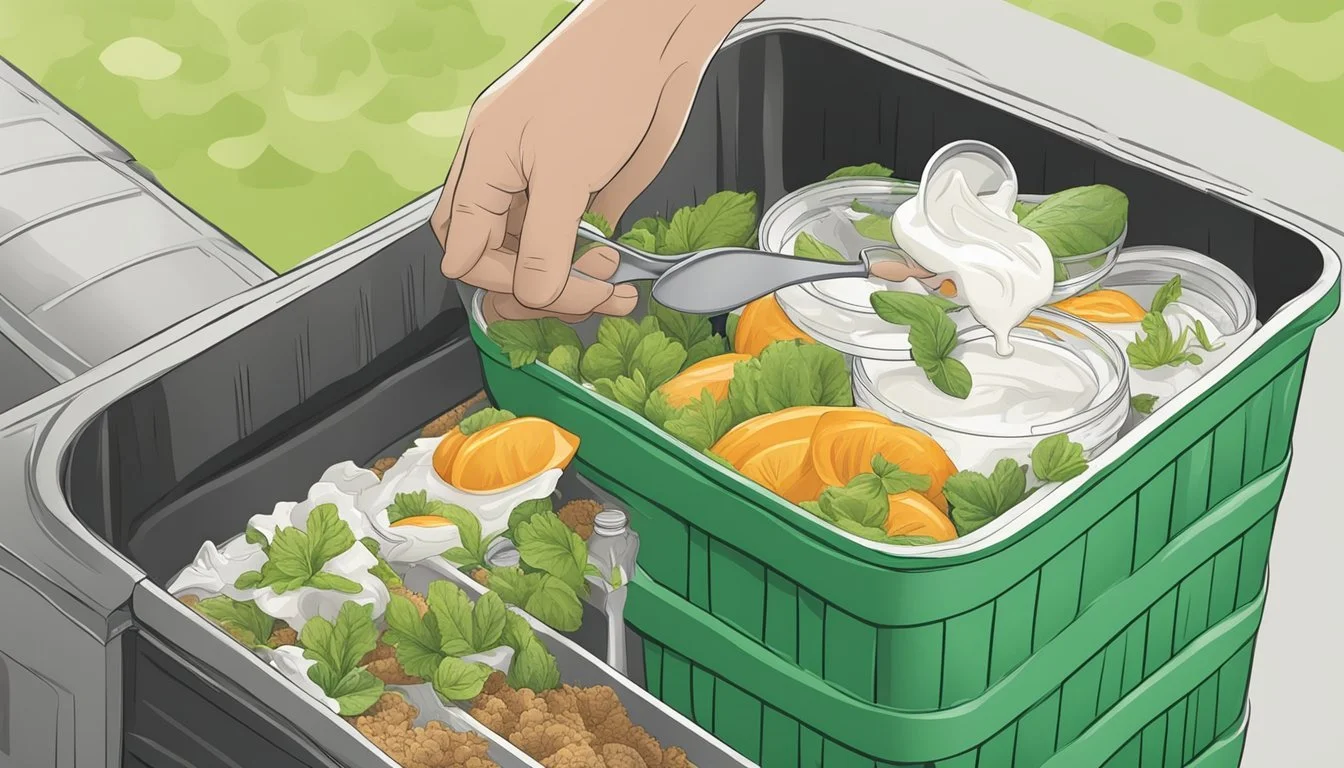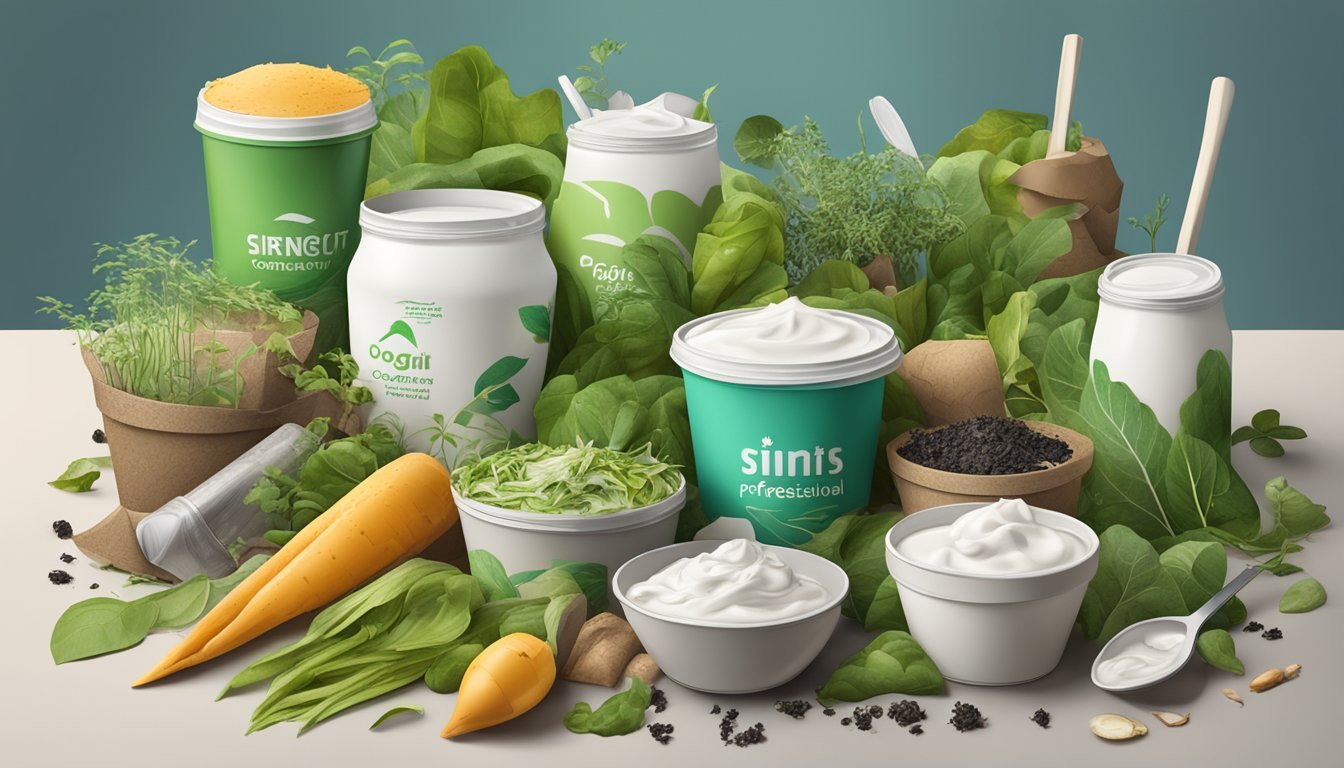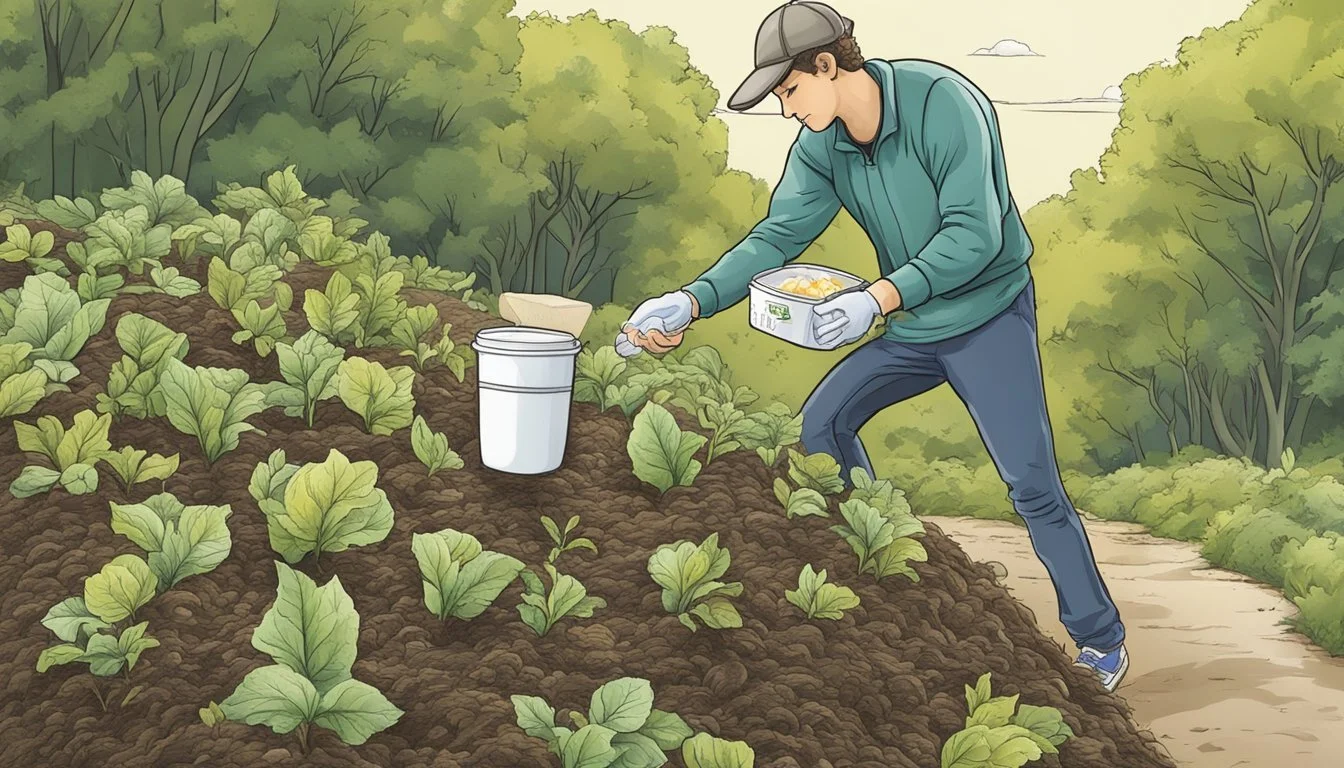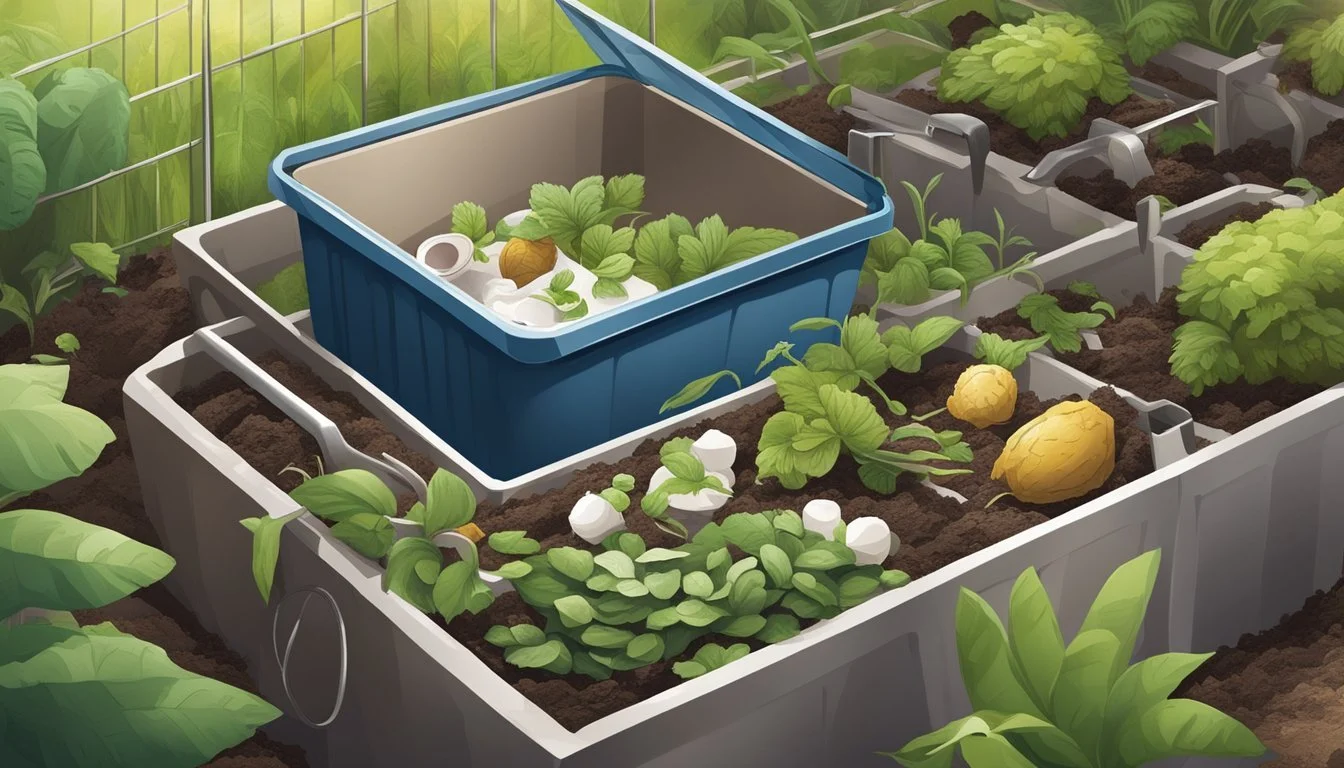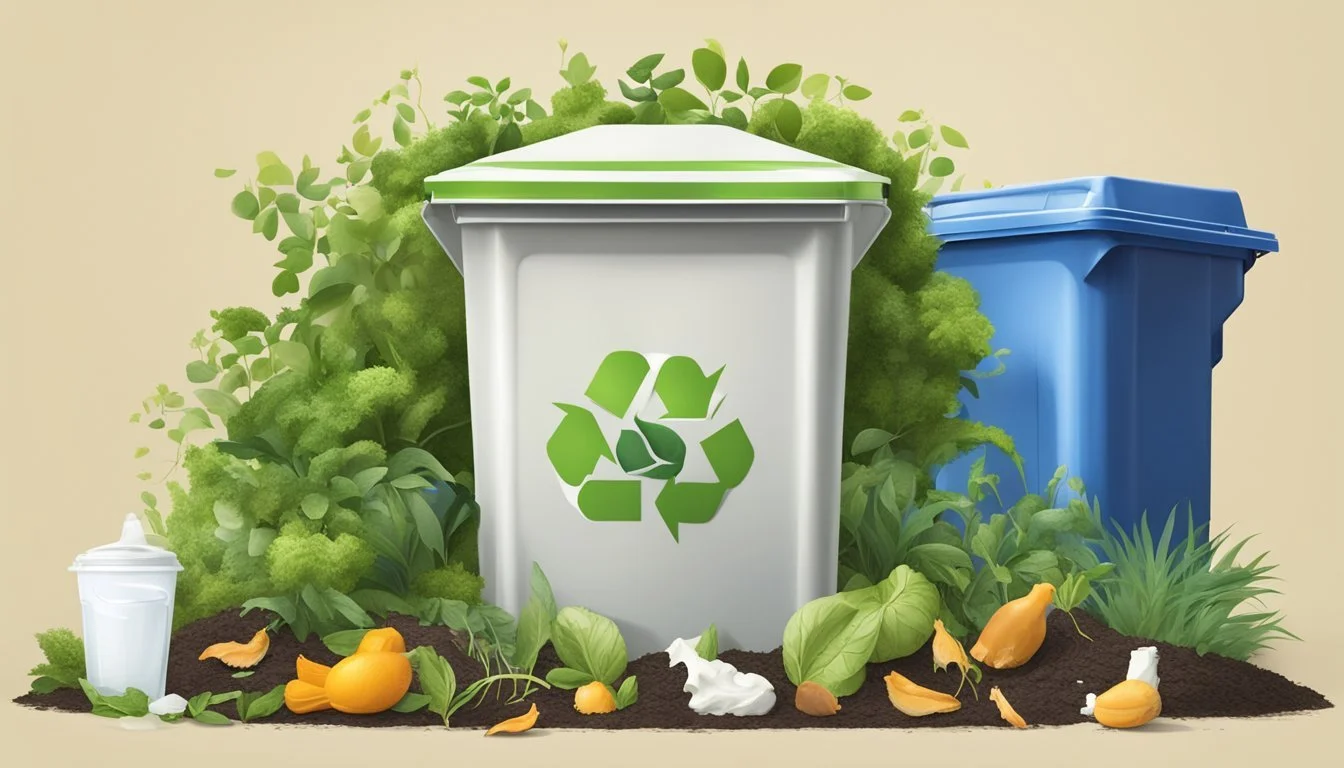Can You Compost Yogurt Containers?
Unpacking the Truth About Biodegradability
Composting offers an environmentally friendly way to recycle organic waste, turning it into rich soil for gardening. A common inquiry among eco-conscious individuals is whether yogurt containers can also be a part of this green process. Given the rising concern over plastic waste, the compostability of yogurt containers is an important topic for those looking to minimize their environmental footprint.
Most yogurt containers are made from plastic, including high-density polyethylene (HDPE) or polystyrene, which are not typically biodegradable and cannot be processed through standard composting methods. However, the industry is evolving, and some manufacturers have begun introducing plant-based or biodegradable containers that are designed to break down in industrial composting facilities. The critical distinction lies in the material composition of the container, which determines its suitability for composting.
For those containers that are compostable, the process contributes to waste reduction efforts and adheres to principles of sustainability. Consumers should check for certifications or labels indicating compostability on the container before adding it to their compost to ensure they are supporting a closed-loop system, one where materials are cycled back into the environment harmlessly.
Basics of Composting
The process of composting transforms organic materials into a rich soil amendment, providing essential nutrients for plant growth. This section navigates the essentials of composting, from its definition to its benefits and common inputs.
Understanding Compost
Compost is the outcome of the natural decomposition of organic matter, turning waste into a valuable organic fertilizer. The decomposition process is facilitated by microorganisms such as bacteria and fungi, which break down organic material into simpler substances. Optimal composting requires a balance of 'green' and 'brown' materials, with greens providing nitrogen and browns supplying carbon.
Benefits of Composting
Composting offers multiple advantages for both soil health and the environment. It enriches the soil, helps suppress plant diseases, and reduces the need for chemical fertilizers. By adding compost, one introduces beneficial organisms to the soil that aid in decomposing organic material, thereby enhancing soil structure and fertility.
Common Compost Materials
A variety of organic materials can be included in a compost pile. Some of the most common compostable materials include:
Kitchen scraps (e.g., vegetable and fruit peels)
Yard trimmings (e.g., grass clippings, leaves)
Non-glossy paper products
Cardboard
Materials to Use Cautiously:
Dairy products (may attract pests)
Meat scraps (potential for odor and pests)
The inclusion of diverse materials ensures the compost is rich in nutrients and beneficial for plant growth.
Composting Dairy Products
When adding dairy products to compost, one should consider the balance between the benefits of recycling organic waste against the potential for attracting pests and creating odors. Careful management of the compost pile is necessary to successfully integrate these types of waste.
Dairy in Compost
Dairy products like milk, cheese, and yogurt can be composted as they are organic materials. They possess probiotics and beneficial bacteria that contribute to the composting process. However, they are often omitted from traditional composting practices due to their tendency to attract pests such as rodents and flies. When dairy items are added to a compost bin, they must be combined with a good balance of 'browns'—carbon-rich materials like dry leaves, straw, or paper—to help mitigate odors and facilitate proper decomposition.
To compost dairy products effectively:
Bury dairy wastes deep within the compost pile to reduce accessibility to pests.
Maintain a hot composting environment which speeds up the decomposition process and reduces the risk of attracting unwanted visitors.
Decomposition of Dairy Products
The decomposition process for dairy items is chiefly facilitated by the action of bacteria, which break down the organic matter converting it into compost. The process releases nutrients that are beneficial for soil health and plant growth. Dairy products are rich in:
Nitrogen: A crucial element for composting, acting as a protein source for microbes.
Calcium: Essential for cell growth in plants, often found in milk and cheese.
However, due to the high protein and fat content in dairy products, they decompose differently than plant-based materials, which may lead to the production of unpleasant odors if not managed properly.
In decomposing dairy products:
Ensure adequate aeration to support aerobic bacteria.
Regularly turn the compost pile to evenly distribute heat and decomposition agents.
Monitor the compost pile for excess moisture, which can create an anaerobic environment, conducive to odor production and slower decomposition.
Concerns with Composting Yogurt
Composting yogurt comes with challenges such as controlling unpleasant odors, managing attractants for pests, and understanding the impact of dairy fat on decomposition rates.
Odors and Pests
When composting yogurt, odors can become a significant issue. It's riddled with proteins and sugars that, once decomposing, release potent smells likely to attract pests. The presence of yogurt in the compost can draw the attention of an array of vermin, from rodents to insects, jeopardizing the health and balance of the compost pile.
Decomposition Rate
The decomposition rate is an essential factor in composting yogurt. Dairy products decompose at varying speeds depending on environmental conditions, with yogurt typically breaking down more slowly than plant-based material. This can delay the overall decomposition process in the compost pile, potentially leading to imbalances that affect compost quality.
Dairy Fat Content
Yogurt's high fat content also influences its suitability for composting. High fat content in dairy can lead to a slower breakdown rate and create an anaerobic environment that stifles the activity of beneficial composting microbes. This fat content interferes with the composting process by creating a barrier around other compost materials, making them less accessible to decomposing agents.
Optimizing the Compost Pile
To create an effective compost pile, one must balance ingredients, manage moisture levels, and ensure proper aeration. These are essential for speedy decomposition and nutrient-rich compost.
Balancing Compost Ingredients
The compost pile requires a balanced mix of green materials, which provide nitrogen, and brown materials, which supply carbon. Greens include kitchen scraps like fruit and vegetable peels, while browns consist of items like dry leaves and cardboard. A recommended ratio for optimal decomposition is approximately 1 part green to 3 parts brown.
Green Materials (Nitrogen-rich)
Vegetable scraps
Fruit waste
Coffee grounds
Brown Materials (Carbon-rich)
Dry leaves
Twigs
Cardboard
Maintaining Moisture Levels
Moisture is critical in a compost pile. The pile should remain damp, like a wrung-out sponge, but not waterlogged. Too much moisture can suffocate beneficial microbes, whereas too little can halt decomposition. Regularly check the moisture levels and adjust by adding water or dry brown materials as needed.
Ideal Moisture Level: 40-60%
Too Dry: Add water or green materials.
Too Wet: Mix in brown materials.
Aerating the Compost
Oxygen is a key element in composting, as it supports the organisms that break down organic matter. Aerating the compost, which involves turning or mixing the pile, allows for air circulation and helps distribute moisture evenly. It should be done every few weeks or when the center of the pile feels warm.
Methods of Aeration:
Turning with a shovel or fork
Using a compost aerator tool
By diligently balancing ingredients, maintaining moisture levels, and aerating the compost, one can ensure a thriving environment for decomposition, leading to the production of high-quality compost.
Advanced Composting Techniques
Advanced composting techniques involve optimizing the decomposition process to create nutrient-rich soil while managing environmental factors. These methods can be tailored to fit the composter's available resources and desired outcomes.
Hot Composting
Hot composting is a method that accelerates decomposition by creating an environment warm enough to support a high level of microbial activity. To achieve effective hot composting, maintain a temperature between 135°F and 160°F. This technique requires balancing the right mix of green (nitrogen-rich) and brown (carbon-rich) materials in a compost pile. An ideal ratio is 1 part green to 25-30 parts brown. Regularly turning the compost ensures even heating and oxygen distribution, which are vital for microorganisms to thrive.
Key Elements for Hot Composting:
Temperature: Between 135°F and 160°F.
Ratio: 1 part green to 25-30 parts brown materials.
Maintenance: Frequent turning for heat and oxygen distribution.
Outcome: Rapid breakdown into nutrient-rich soil.
Cold Composting
Cold composting is a more gradual process compared to hot composting. It requires less maintenance but takes longer to produce compost. This method relies on the natural breakdown of organic materials over time, aided by microorganisms, insects, and worms. There is no need to monitor temperatures closely, but the material should remain moist and should be turned occasionally to prevent anaerobic conditions.
Critical Factors for Cold Composting:
Temperature: Not actively monitored, ambient conditions.
Maintenance: Less frequent turning, can take several months to a year.
Outcome: Eventually yields nutrient-rich soil, but at a slower rate.
Avoiding Composting Pitfalls
Proper composting of yogurt containers requires attention to detail to prevent issues such as unwanted odors and pest infestation. This section provides specific measures to help maintain a healthy composting environment.
Preventing Unpleasant Odors
Aeration: Regularly turn the compost to ensure adequate oxygen flow and to speed up the breakdown process, which helps minimize odors. Balance: Maintain a balance of greens (nitrogen-rich materials) and browns (carbon-rich materials) to avoid the excess moisture that can lead to unpleasant smells.
Deterring Pests and Pathogens
Seal Containers: Use a closed compost bin to deter pests and vermin from accessing food scraps. Careful Addition: Avoid adding dairy products like yogurt directly to compost to prevent attracting pests and growth of harmful pathogens.
Compost Bin Management
Location: Position the compost bin away from the home, reducing the likelihood of pest intrusion. Drainage: Ensure proper drainage to prevent leachate buildup which can attract pests and harbor pathogens.
Environmental Considerations
When composting yogurt containers, it is crucial to consider their lifecycle and environmental impact, particularly in terms of greenhouse gas emissions and landfill space conservation.
Reducing Greenhouse Gas Emissions
Yogurt containers, depending on their material, can play a significant role in reducing greenhouse gas emissions. Containers made from biodegradable materials or plant-based plastics contribute less to methane production during decomposition. Methane is a potent greenhouse gas with a global warming potential many times greater than carbon dioxide. Composting or recycling these containers effectively can prevent them from entering landfills where they would take up space and potentially release methane as they break down anaerobically.
Container Type Impact on Methane Emissions Biodegradable Lowers potential methane emission Plant-based plastics Reduces methane production during decomposition Traditional plastics Could contribute to methane if not recycled
Yogurt Containers and Landfill Impact
The environmental impact of composting yogurt containers stretches to their influence on landfill space. Landfills are a major concern due to limited space and their environmental effects. By choosing to compost or recycle, individuals and communities can significantly reduce waste that ends up in landfills. Environmentally friendly practices such as composting applicable yogurt containers help preserve the soil quality and reduce the volume of trash that contributes to the growing landfill problem.
Action Impact on Landfills Composting applicable containers Reduces landfill volume Recycling Conserves landfill space Responsible disposal Minimizes the environmental footprint
The materials that yogurt containers are made from determine whether they can be composted and what their environmental footprint will be. It is therefore imperative that consumers are informed about the types of containers they use and the most environmentally friendly disposal options available to them.
Composting Yogurt Frequently Asked Questions
When composting yogurt, it is essential to be aware of the type of yogurt, the composting method to use, and the safety measures to ensure a beneficial composting process.
Can You Compost Flavored Yogurt?
Yes, flavored yogurt can be composted; however, it is important to consider the artificial flavors and additional sugar content. These additives may not be as beneficial as plain yogurt in the composting process and might attract pests. Greek yogurt, due to its higher concentration of dairy solids, may add more nutrients to the compost but should still be added in moderation to maintain a balanced compost pile.
How to Compost Yogurt Properly
To compost yogurt:
Mix with carbon-rich materials: Yogurt should be mixed with “brown” materials like dry leaves, straw, or sawdust to balance nitrogen levels and aid in proper decomposition.
Bury the yogurt: Reduce the chance of attracting pests by burying yogurt under at least 10 inches of compost.
Monitor the pile: Keep an eye on moisture levels and turn the compost regularly to aerate and speed up the composting process.
These steps help ensure that the beneficial bacteria in the yogurt break down effectively, enriching the compost without leading to odor or pest issues.
Safety Considerations When Composting Yogurt
While yogurt contains beneficial bacteria that are good for compost, it can also spoil, hosting harmful bacteria. To minimize potential risks, never compost yogurt past its expiration date, as this can introduce dangerous pathogens into your compost. Additionally, do so in a way that does not compromise the safety and balance of your compost pile. By composting yogurt responsibly, you can help reduce food waste and create a nutrient-rich amendment for your garden that supports plant health.

